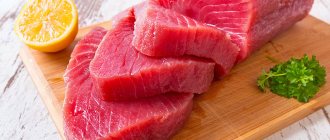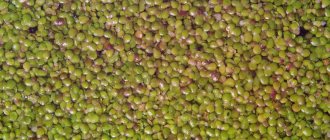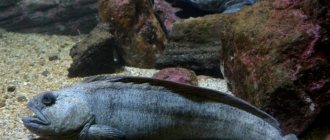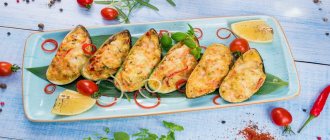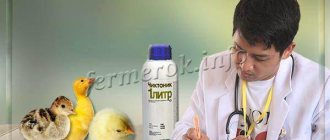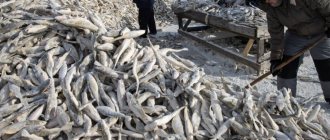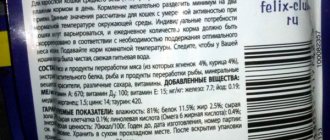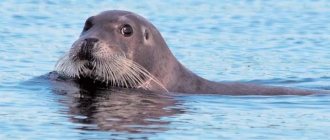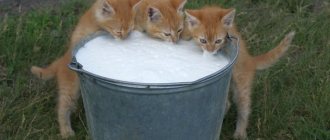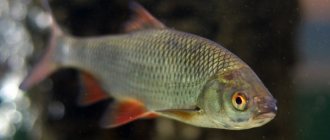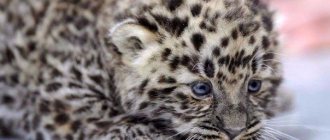- Wild animals
- >>
- Other animals
Trepang is an unusual seafood delicacy, very popular in oriental cuisines and a real exotic for Europeans. The unique medicinal properties of meat and its taste allow these inconspicuous invertebrates to take their rightful place in cooking, but due to the complex processing procedure and limited habitat, sea cucumbers are not widely used. In Russia, they began to harvest an unusual marine inhabitant only in the 19th century.
Origin of the species and description
Photo: Trepang
Sea cucumbers are one of the species of sea cucumbers or sea cucumbers - invertebrate echinoderms. In total, there are more than a thousand different species of these marine animals, which differ from each other in their tentacles and the presence of additional organs, but only sea cucumbers are eaten as food. Holothurians are the closest relatives of ordinary sea stars and urchins.
Video: Trepang
The oldest fossils of these creatures date back to the third period of the Paleozoic, more than four hundred million years ago - they are older than many species of dinosaurs. Sea cucumbers have several other names: sea cucumber, egg capsules, sea ginseng.
The main differences between sea cucumbers and other echinoderms:
- they have a worm-like, slightly oblong shape, lateral arrangement of organs;
- they are characterized by a reduction of the leathery skeleton to calcareous bones;
- there are no protruding spines on the surface of their body;
- the body of a sea cucumber is symmetrical not on two sides, but on five;
- sea cucumbers lie on the bottom “on their side”, while the side with three rows of ambulacral legs is the abdomen, and the side with two rows of legs is the back.
Interesting fact: Having taken the sea cucumber out of the water, you must immediately sprinkle its body generously with salt so that it becomes hard. Otherwise, the sea creature will soften and turn into jelly when exposed to air.
Chemical composition
Holothuria is a healthy dietary product, 100 grams of which contain 34 kilocalories.
However, despite the low energy levels, sea cucumber has high nutritional value (due to the high content of protein, bacterial components, micro- and macroelements).
The protein concentration in sea cucumber tissue varies between 8-10% of body weight.
In this case, most of the composition of the protein fraction is occupied by collagen-like structures. These substances are characterized by a high concentration of free amino acids (glycine, proline, arginine, lysine, threonine, aspartic acid). Table No. 1 “Nutritional value of sea cucumber”
| Components | Element content in 100 grams of sea cucumber, grams |
| Water | 89,4 |
| Squirrels | 7,3 |
| Mono- and disaccharides | 2,2 |
| Fats | 0,6 |
| Ash | 0,3 |
| Starch | 0,2 |
| Organic acids | 0,06 |
Table No. 2 “Content of vitamins and minerals in the tissues of sea cucumbers”
| Name | Nutrient content per 100 grams of product, milligrams |
| Vitamins | |
| Ascorbic acid (C) | 5,4 |
| Tocopherol (E) | 4,2 |
| Folic acid (B9) | 4,2 |
| Niacin (B3) | 1,4 |
| Pyridoxine (B6) | 0,07 |
| Thiamine (B1) | 0,02 |
| Pantothenic acid (B5) | 0,02 |
| Riboflavin (B2) | 0,01 |
| Biotin (H) | 0,0002 |
| Macronutrients | |
| Potassium | 72,6 |
| Sulfur | 70 |
| Magnesium | 49 |
| Calcium | 48 |
| Phosphorus | 20 |
| Microelements | |
| Iron | 2 |
| Cobalt | 1,1 |
| Zinc | 0,18 |
| Iodine | 0,07 |
| Manganese | 0,05 |
| Bor | 0,044 |
| Copper | 0,019 |
| Chromium | 0,0004 |
In addition, the tissues of sea cucumber contain triterpene saponins (structural components of immunomodulator plants: ginseng, eleutherococcus, and honey). Thanks to these compounds, shellfish meat has bactericidal, hemolytic, cytotoxic, antitumor and immunocorrective properties.
Due to its unique chemical composition, sea cucumber is called “sea ginseng” in China.
Appearance and features
Photo: What sea cucumber looks like
To the touch, the body of sea cucumbers is leathery and rough, most often wrinkled. The walls of the body themselves are elastic with well-developed muscle bundles. At one end there is a mouth, at the opposite end there is an anus. Several dozen tentacles surrounding the mouth in the form of a corolla are used to capture food. The mouth opening continues with the intestines, twisted in a spiral. All internal organs are located inside the leathery sac. This is the only creature living on the planet whose body cells are sterile; they are completely free of any viruses or microbes.
Most sea cucumbers have a brown, black or green body color, but there are also red and blue specimens. The skin color of these creatures depends on their habitat - it blends with the color of the underwater landscape. The size of sea cucumbers can range from 0.5 cm to 5 meters. They do not have special sensory organs, and their legs and tentacles serve as organs of touch.
The entire diversity of holothurians is conditionally divided into 6 groups, each of which has its own characteristics:
- legless - do not have ambulacral legs, tolerate desalination of water well and are often found in mangrove swamps;
- side-footed - they are characterized by the presence of legs on the sides of the body, prefer greater depth;
- barrel-shaped - have a spindle-shaped body, perfectly adapted to life in the ground;
- tree-tentacled sea cucumbers are the most common group;
- thyroid-tentacled - have short tentacles that the animal never hides inside the body;
- dactylochirotids are sea cucumbers with from 8 to 30 developed tentacles.
Interesting fact: Sea cucumbers breathe through their anus. Through it they draw water into their body, from which they then absorb oxygen.
Useful properties of sea cucumbers
Eating sea cucumber meat promotes numerous positive changes in the body. This is a seafood:
- accelerates the formation of new cells;
- stimulates tissue regeneration;
- strengthens the immune system;
- improves blood composition;
- provides antioxidant effect;
- slows down the aging process;
- prevents various diseases.
Historical fact! The pronounced healing properties of sea cucumber fillet were described back in the 16th century in the famous oriental book “U-tzu-tzu”. Since time immemorial, Eastern emperors and other rulers sought to consume this delicacy, thanks to which they were saved from various diseases and achieved longevity. In terms of their effectiveness, sea cucumbers are often compared to ginseng, which is why in China they have long been called “sea root”.
Modern research confirms that sea cucumber pulp brings significant benefits for almost any existing diagnosis. It is recommended to include such a product in the diet for disorders of the gastrointestinal tract, kidney diseases, diabetes mellitus, tuberculosis, joint pathologies, diseases of the female genital area, impotence, infertility, multiple sclerosis, senile dementia, and non-healing wounds. Today, medicines are produced for cancer patients containing natural sea cucumber extract.
Where does sea cucumber live?
Photo: Sea cucumber
Sea cucumbers live in coastal sea waters at depths from 2 to 50 meters. Some species of sea cucumbers never sink to the bottom, spending their entire lives in the water column. These animals reach the greatest diversity of species and numbers in the coastal zone of warm areas of the ocean, where large accumulations with a biomass of up to 2-4 kilograms per square meter can form.
Sea cucumbers do not like moving soil; they prefer bays protected from storms with muddy sandbanks and scattered stones; they can be found near mussel settlements and among thickets of seaweed. Habitat: Sea of Japan, China, Yellow Sea, coast of Japan near the southern coast of Kunashir and Sakhalin.
Many sea cucumbers are especially sensitive to a decrease in water salinity, but are able to withstand sharp temperature fluctuations from negative to 28 degrees plus. If you freeze an adult and then gradually defrost it, it will come back to life. The vast majority of these creatures are resistant to oxygen deficiency.
Interesting fact: If a sea cucumber is placed in fresh water, it throws out its insides and dies. Some species of sea cucumbers do this in case of danger, and the liquid with which they throw out their internal organs is poisonous to many marine inhabitants.
Now you know where sea trepang is found and how it is useful. Let's see what he eats.
What does sea cucumber eat?
Photo: Sea cucumber sea cucumber
Trepangs are real orderlies of the seas and oceans. They feed on the remains of dead marine life, algae and small animals. They absorb useful substances from the soil, which they first suck into their body. All waste is then thrown back. If an animal loses its intestines for any reason, a new organ will grow within a couple of months. The sea cucumber's digestive tube looks like a spiral, but if you stretch it, it will stretch for more than a meter.
The end of their body with the mouth opening is always raised for catching food. All tentacles, and there can be up to 30 of them depending on the type of animal, are always in motion and constantly searching for food. The sea cucumbers lick each of them in turn. Over the course of a year of life, medium-sized sea cucumbers are capable of sifting more than 150 tons of soil and sand through their bodies. Thus, these amazing creatures process up to 90% of all animal and plant remains that settle on the bottom of the world's oceans, which has the most beneficial effect on the world's ecology.
Interesting fact: A sea cucumber, divided into three parts and thrown into the water, quickly replenishes the missing parts of its body - each individual piece turns into a whole individual. In the same way, sea cucumbers are able to quickly grow lost internal organs.
Contraindications
But despite the entire positive spectrum, it is also necessary to take into account the hypothetical contraindications of using sea cucumber with honey. They may be as follows:
- If you have allergic reactions to components of beekeeping products, taking sea cucumber with honey is highly not recommended. Since this can cause not only an allergic rash, but also swelling of the respiratory tract.
- Any cancer is not a complete contraindication, but only a partial one. This is due to the fact that such a tincture can only be prescribed by a doctor, who will constantly monitor the effectiveness of the effect. Otherwise, it is strictly forbidden to take sea cucumber with honey for oncology. This is due to the fact that any stimulating drugs, including this tincture, can cause increased growth of cancer cells.
- Pregnancy and breastfeeding are also contraindications.
- Hypotensive patients need to be careful, since in this case the tincture can only be taken in moderate doses.
In all other cases, it is necessary to take into account your own condition and the feasibility of such treatment, which is quite effective. But it is still recommended not to mix medications and traditional recipes. It is advisable to take them separately. This way you can achieve greater success and not reduce the effect of any drug.
Features of character and lifestyle
Photo: Far Eastern sea cucumber
The sea cucumber is a sedentary crawling animal, mainly preferring to be on the seabed among algae or a scattering of stones. It lives in huge herds, but crawls along the ground alone. At the same time, the sea cucumber moves like a caterpillar - it pulls up its hind legs and firmly attaches them to the ground, and then, alternately tearing off the legs of the middle and front parts of the body, throws them forward. Sea ginseng moves slowly - in one step it covers a distance of no more than 5 centimeters.
Feeding on plankton cells, pieces of dead algae along with the microorganisms found on them, sea cucumber is most active at night, at midday. As the seasons change, so does its feeding activity. In the summer and early autumn, these animals have less need for food, and in the spring they have the largest appetite. During winter, some species of sea cucumbers hibernate off the coast of Japan. These sea creatures are capable of making their bodies both very hard and jelly-like, almost liquid. Thanks to this feature, sea cucumbers can easily climb even into the narrowest crevices in rocks.
Interesting fact: A small fish called carp can hide inside sea cucumbers when they are not looking for food, but it gets inside through the hole through which sea cucumbers breathe, that is, through the cloaca or anus.
Preparing the tincture
To treat Far Eastern sea cucumber, you can use a ready-made honey tincture or prepare it yourself.
It’s difficult to find a ready-made, high-quality product; it’s easier to make it yourself. For this, fresh or dried sea cucumbers are used.
To prepare the drug from a fresh creature, you need to keep it in water for some time, and then remove all the insides. The prepared carcass is washed and cut into small pieces. All ingredients are placed in a glass container and filled with honey to the very top. The composition is infused for two months in a dark, cool place. After this, the product is filtered and poured into containers.
You can make a tincture from dried sea cucumber. To do this, the meat is soaked in water for several hours. The further technique does not differ from that used when preparing the drug from a fresh carcass.
Social structure and reproduction
Photo: Primorsky sea cucumber
Sea cucumbers can live up to 10 years, and puberty ends around 4-5 years.
They are able to reproduce in two ways:
- sexual with fertilization of eggs;
- asexual, when the holothurian, like a plant, is divided into parts, from which individual individuals later develop.
In nature, the first method is mainly found. Sea cucumbers spawn at water temperatures between 21-23 degrees, usually from mid-July to the last days of August. Before this, the fertilization process occurs - the female and male stand vertically opposite each other, attaching the rear end of the body to the surface of the bottom or stones, and synchronously release eggs and seminal fluid through the genital openings located near the mouth. One female lays more than 70 million eggs at a time. After spawning, exhausted individuals climb into shelters, where they rest and gain strength until October.
After some time, larvae emerge from the fertilized eggs, which go through three stages in their development: dipleurula, auricularia and doliolaria. During the first month of their life, the larvae constantly mutate, feeding on single-celled algae. During this period, a huge number of them die. To develop into a fry, each sea cucumber larva must attach to the ahnfeltia seaweed, where the fry will live until it grows.
Recipes
Pea soup with sea cucumbers
Ingredients:
- sea cucumbers – 100 grams;
- peas (lentils) – 30 grams;
- carrots – 15 grams;
- parsley root – 20 grams;
- lard (lard) – 20 grams;
- greens – 20 grams.
Cooking algorithm:
- Boil the sea cucumbers in several changes of water, cut into cubes.
- Fry seafood, carrots and parsley roots (in lard).
- Boil the peas until half cooked (20-30 minutes).
- Add the fried mixture, herbs, and seasonings to the broth.
Serve pea soup with sour cream or spicy mustard sauce.
Sea cucumbers under marinade
Components:
- dried sea cucumbers – 50-60 grams;
- carrots – 600 grams (4-5 pieces);
- celery – 15 grams (3-4 sprigs);
- onions – 300 grams (2-3 pieces);
- tomato paste – 30 milliliters;
- water – 70 milliliters;
- little vegetable - 30 milliliters;
- apple cider vinegar – 15 milliliters;
- sugar – 5 grams;
- seasonings (bay leaf, sweet peas, salt, onion).
Cooking diagram:
- Boil the sea cucumbers (after pre-soaking).
- Prepare the marinade. To do this, peel the vegetables first. Then the carrots are grated, the onions are cut into rings, and the greens are chopped using a blender. Prepared vegetables are sautéed in vegetable oil until half cooked. Then the mixture is combined with tomato paste and simmered over low heat for another 5-10 minutes. After this, vinegar, water, sugar, seasonings and herbs are added to the frying. After boiling, the dressing is heated for 15 minutes.
- Add chopped sea cucumbers to the hot marinade. Simmer the mixture over low heat for 5-10 minutes.
The dish can be served either cold or hot.
Roast sea cucumbers with vegetables
Ingredients:
- sea cucumbers – 300 grams;
- vegetable oil – 45 milliliters;
- white cabbage – 400 grams;
- carrots – 200 grams;
- zucchini – 200 grams;
- potatoes – 300 grams;
- tomatoes – 200 grams;
- mayonnaise – 150 milliliters;
- cheese – 150 grams.
Cooking diagram:
- Boil sea cucumbers in three changes of water (after soaking for a day).
- Fry the sea cucumbers in vegetable oil (for 5 minutes).
- Chop vegetables. Cut the cabbage into half rings, potatoes into strips, carrots and zucchini into cubes. Grate the tomatoes.
- Fry the vegetable mixture over low heat (5 minutes).
- Combine cabbage, carrots, zucchini and potatoes with sea cucumbers, add salt and seasonings.
- Place the prepared mixture on a baking sheet. Pour in tomato sauce.
- Bake the dish in the oven for 20 minutes (at 180 degrees).
- Sprinkle the semi-finished dish with cheese and coat with mayonnaise (10 minutes before it’s ready).
Serve the roast with tomato juice and pickled mushrooms.
Natural enemies of sea cucumbers
Photo: Sea cucumber
Sea cucumbers have virtually no natural enemies, for the reason that the tissues of its body are saturated with a huge amount of microelements that are most valuable to humans, which are very toxic to most marine predators. The starfish is the only creature that can eat sea cucumber without harming its body. Sometimes the sea cucumber becomes a victim of crustaceans and some species of gastropods, but this happens very rarely, as many try to avoid it.
The frightened sea cucumber instantly gathers into a ball and, defending itself with spicules, becomes like an ordinary hedgehog. When in serious danger, the animal expels the hindgut and water lungs through the anus to distract and scare off attackers. After a short period of time, the organs are completely restored. The most important enemy of sea cucumbers can be safely called humans.
Due to the fact that sea cucumber meat has excellent taste, is rich in valuable protein, and is a real storehouse of substances beneficial to the human body, it is mined from the seabed in huge quantities. It is especially valued in China, where many medicines for various diseases are made from it, used in cosmetology, and as an aphrodisiac. It is consumed dried, boiled, and canned.
Processing before cooking
Sea cucumber cannot be stored fresh for a long time. It most often arrives to customers processed.
Holothurians caught from the seas are handled as follows:
- clean thoroughly;
- boil for a long time;
- dry for at least 2-3 weeks.
Yandex pictures
Note! Many people are interested in why the dried sea cucumber presented in stores is black. This is due to the fact that in the final preparation for sale, sea cucumbers are sprinkled with crushed coal.
Before cooking, the sea cucumbers are completely washed of charcoal powder, filled with water and left for 24 hours. The liquid is changed several times during the day. After soaking, sea cucumber carcasses swell and become much larger.
Before making dishes with sea cucumber meat, they are cut and gutted. Cooking requires following all the steps described in the recipes. Only in this case will the fillet become truly soft and pleasant to the taste.
Sometimes you can find frozen sea cucumbers, which are pre-boiled. Such carcasses are defrosted in water at +15 degrees. Before cooking, they are scalded with boiling water.
Population and species status
Photo: What sea cucumber looks like
Over the past decades, the population of some species of sea cucumber has suffered greatly and is almost on the verge of extinction, among them the Far Eastern sea cucumber. The status of other species is more stable. Fishing for sea cucumbers in the Far East is prohibited, but this does not stop Chinese poachers who, violating borders, enter Russian waters specifically for this valuable animal. Illegal fishing of Far Eastern sea cucumbers is on a huge scale. In Chinese waters their population has been virtually wiped out.
The Chinese have learned to grow sea cucumbers in artificial conditions, creating entire farms of sea cucumbers, but in terms of their characteristics, their meat is significantly inferior to those caught in their natural habitat. Despite the small number of natural enemies, the fertility and adaptability of these animals, they are on the verge of extinction precisely because of the insatiable appetites of humans.
At home, attempts to breed sea cucumbers most often ended in failure. Having enough space is very important for these creatures. Since at the slightest danger they protect themselves by throwing a specific liquid containing toxins into the water, in a small aquarium without sufficient water filtration they will gradually poison themselves.
Product usefulness
The healing properties of sea cucumber have been known to mankind since time immemorial. However, information about the medicinal value of the product reached Europe only at the end of the 16th century (from the culture of ancient China). Eastern medicine healers used clam extract as a powerful stimulant and tonic. In addition, the imperial dynasties of China used sea cucumber infusion as a rejuvenating elixir (to extend the period of their reign). It is interesting that in ancient times such drugs were treated as miraculous sources of vitality.
Currently, the medicinal value of sea cucumber has been confirmed by numerous experimental and clinical studies. Considering that animal tissue contains more than 200 nutritional components, bioactive compositions and complexes are made on its basis. The main effects of such drugs are stimulating, healing, antiviral, antioxidant, immunomodulatory, hematopoietic, and hypotensive. To improve the health of the body, you can use both ready-made store-bought mixtures and drugs created at home.
Preparation of medicinal tincture (with honey):
- Clean the fresh carcass from skin and entrails. If dried shellfish is used, it is pre-soaked in cold water for 10-12 hours.
- Cut the prepared meat into small pieces. If desired, you can use a meat grinder.
- Place the crushed raw materials in a glass or clay container.
- Pour natural honey over the meat (so that it covers the fillet), mix the mixture thoroughly.
- Leave in a dark, cool place for 1-1.5 months.
A properly prepared medicine has a dark, rich color and a thick consistency (heterogeneous).
How to take sea cucumber tincture?
For medicinal purposes, the mixture is consumed twice a day, 15 ml 20 minutes before meals. Duration of therapy is 1 month. After three weeks, taking the drug is resumed (if necessary).
For preventive purposes, the composition is used in the fall before the cold season and in the spring to strengthen the immune system (5 ml three times a day). However, in the first week of therapy, the size of a single serving should not exceed 15 drops (due to the powerful stimulating effect). In addition, while taking sea cucumber extract, it is important to control your heart rate and blood pressure. If necessary, take a sedative at night (to relieve nervous excitement). Therefore, it is recommended to use this composition in the first half of the day.
Effects of using sea cucumber infusions (if the dosage regimen is followed):
- strengthens the immune system, increases the body's resistance to pathogenic agents;
- stabilizes blood pressure;
- normalizes lipid and cholesterol metabolism;
- increases visual acuity;
- stimulates the regeneration of damaged tissues;
- reduces blood sugar levels;
- stimulates male potency;
- improves thyroid function;
- increases vitality;
- accelerates the removal of carcinogenic substances from the body;
- reduces the intensity of inflammatory processes (at the site);
- improves psycho-emotional background;
- has an antibacterial effect;
- increases the body's antitumor defense and slows down the growth of tumors.
Along with oral administration, sea cucumber extract is used for the external integument of the body. Namely, for treating skin rashes, rinsing the mouth (after dental procedures), nasal drops, and lubricating the walls of the vagina.
Remember, sea cucumber extract cannot be used if you have hyperthyroidism or allergies to bee and seafood products.
